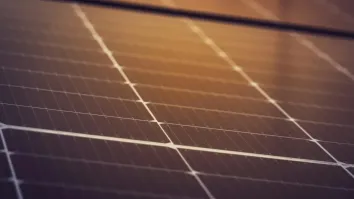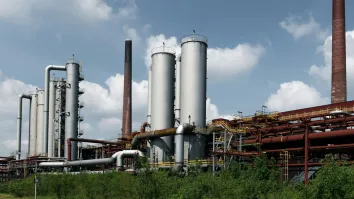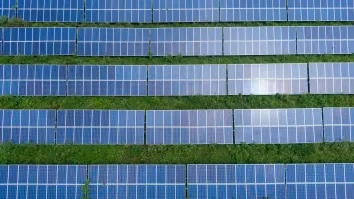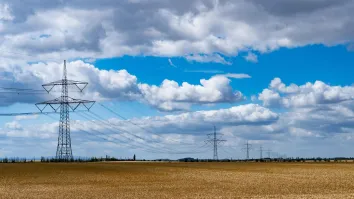
Taiwan's nuke-free vow under fire as energy supply issues arise amidst massive blackout
Was Taiwan right in ditching nuclear?
When a power outage crippled more than 6 million households in Taiwan on August 15 amidst the sweltering summer heat, it brought to fore the dilemma the aspiring renewable energy leader now finds itself in: can it ditch nuclear power and reduce coal dependence whilst managing to avert future blackouts?
The Ministry of Economic Affairs attributed the massive power outage to an operational error in Tatan Power Plant, the country’s biggest natural gas power plant located in Taoyuan’s Guanyin District. Six generators stopped working and affected the supply of 4 million kilowatts of electricity. Households and businesses throughout the island had to bear through three hours of power rationing, disrupting business operations and household activities.
In the aftermath of the power outage, the economy minister resigned and analysts sounded off warnings that Taiwan might need to re-evaluate its bold plan to nix nuclear, shift away from coal, and focus on renewables and natural gas.
“The current objective of phasing out nuclear power whilst at the same time drastically reducing coal consumption in Taiwan’s energy mix by 2025 looks overly ambitious,” Dr Guo Yu, principal Asia analyst at Maplecroft, a UK-based risk and strategic consulting firm said. “The Taiwanese government, led by Prime Minister Lin Chuan, aims to drastically alter the country’s energy mix. It looks to raise the share of renewable energy to 20% by 2025 from 5% currently, hike up the share of natural gas to 50% from 32%, lower the share of coal to 30% from 45%, and remove the 15% share of nuclear power.
Verisk Maplecroft’s Energy Security Index already categorises Taiwan as “high risk” with a score of 3.42/10.00 due to its “extreme” dependence on seaborne natural gas imports. The country will only become more vulnerable to supply disruptions due to geopolitical tensions and price volatilities if it follows through on its plan to source half of its electricity production through natural gas. “A greater reliance on energy imports would further undermine the country’s energy security,” Yu said.
The analyst also warns that growth of power generation from renewable sources “is unlikely to fill the nuclear-coal shortfall.” This is contrary to the government’s more sanguine targets to quadruple renewable energy’s share in the energy mix, which it expects to reach by attracting $59 billion in private capital to help finance new renewable projects.
Kerry-Anne Shanks, head of Asia Gas and LNG at Wood Mackenzie, reckons the August 15 mass blackout highlights some key issues in Taiwan’s power sector such as construction delays. “The cause of the blackout was human error which stopped gas supplies into the Tatan power plant. Subsequently, the plant with a total of 4,384MW of gas-fired capacity went offline completely. Power cut-offs of this scale are difficult to back-up, but Taiwan’s power market has also been stretched,” she said.
Blame it on the old guys
Shanks blames ageing thermal capacity and capacity addition delays as major culprits in the summer power outage. Taipower, for example, has been constructing 2,293MW of new capacity to help cope with the summer peak but these projects have been pushed back and were not available for peak demand in July and August.
“The track record of adding new generation capacity on the schedule is poor. There have been frequent delays of new capacity construction,” she said.
Shanks also points out that Taiwan has a capacity problem, not a fuel supply one, which means the plan to import more LNG or coal in the near term may not be the ideal option. To highlight the issue, she explained that during peak months June and July, reserve margins, which measure the amount of power a grid has over and above its demand, went as low as 2.5%, far below the 10 to 15% comfort levels. These falling reserve margins increase the risk of outages.
“In 2016, Taiwan had 80 days where reserve margins fell below 6%, which is unhealthy,” said Shanks. In the face of this fuel supply problem, Taiwan’s planned nuclear phase out has become harder to defend, according to analysts. To make Taiwan nuclear-free by 2025, the government has stopped operations for three of the country’s six nuclear power plants before they have reached the end of their service lifetime.
Yu noted that the government must cover the cost of mothballing and decommissioning the nuclear power plants, whilst Shanks says replacing nuclear generation with gas and renewable capacity leads to more expensive electricity — a combination that leaves the nuclear-free plan open to increasing opposition. “The government will also be wary of backlashes from the public and business communities over potential electricity price hikes during the transformation,” Shanks said. “Pressures to increase tariffs will likely mount over the coming years as hefty up-front investment is needed in the development of gas-fired plants and renewable power generation.”
Can renewables save it?
Taiwan’s energy transition is driven by four core values, according to Dr Chuan-Neng Lin, director general of Bureau of Energy. First, strengthening energy security and providing access to stable, affordable and low-risk electricity. Second, building a green economy, driven by technology innovation and a growth driver to local employment. Third, increasing environmental sustainability by moving towards clean energy and providing a healthier environment for Taiwan’s population. And fourth, raising social equity through the ensuing “market revolution” in Taiwanese energy sector and lower electricity prices.
Illustrating the progress the government has made in the energy transition, Lin ran down some of the key accomplishments in renewable energy development. In the area of offshore wind power development, 36 potential sites for investment have been identified and there are preparations to begin offshore wind power zonal development after finishing environment impact assessment evaluations and permit clearances.
In solar power development, he said the two-year solar photovoltaic (PV) project to add 1.52GW of capacity is going along well through a deployment strategy that prioritises roof type and specific ground type installations over large-scale ground type. The roof type installations will be popping up in agricultural facilities (450MW), residential and business buildings (240MW), factories (160MW), and government buildings (60MW). Meanwhile, the ground type installations will be spread out in the lands of salt industry players (230MW), severe subsided areas (200MW), water bodies like ponds and dams, and brown field areas (30MW).
In a review late last year, Mei-Chih Hu, professor at the Institute of Technology Management, National Tsing Hua University said “Taiwan could be an important player in renewable energy.”
“For years it has been missing opportunities due to the focus on nuclear power and fossil fuels (which probably owed more to Taiwan’s geopolitical situation than to strictly energy-related concerns). But now the way is open to build the country’s generating capacity utilising renewables whose impact can be increased by investment in smart grids.” “This would allow Taiwan to complement its manufacturing capacities in producing solar PV cells as well as (potentially) wind turbines and other renewable energy devices.”
She explained that Taiwan is positioned well to pursue its renewable energy dream. For one, it has well-tested industrial development models involving the promotion of new industries through market stimulation and domestic technology leverage. “Now is the time to apply these skills to the urgent needs of cleaning up its energy system and creating new pillar industries for the future.”
Yu reckons there is strong support for this energy future the Taiwanese government envisions, but this could wear thin if the current administration fails to work out the flaws that the recent blackout has laid bare. “While politically embarrassing for the Tsai administration, the fallout from the blackout does not pose an immediate threat to government stability,” said Yu. “However, the incident raises questions of the government’s wider energy policy, which will prove an important issue that may determine the political fortunes of President Tsai and the ruling Democratic Progressive Party as we approach.”



















 Advertise
Advertise







